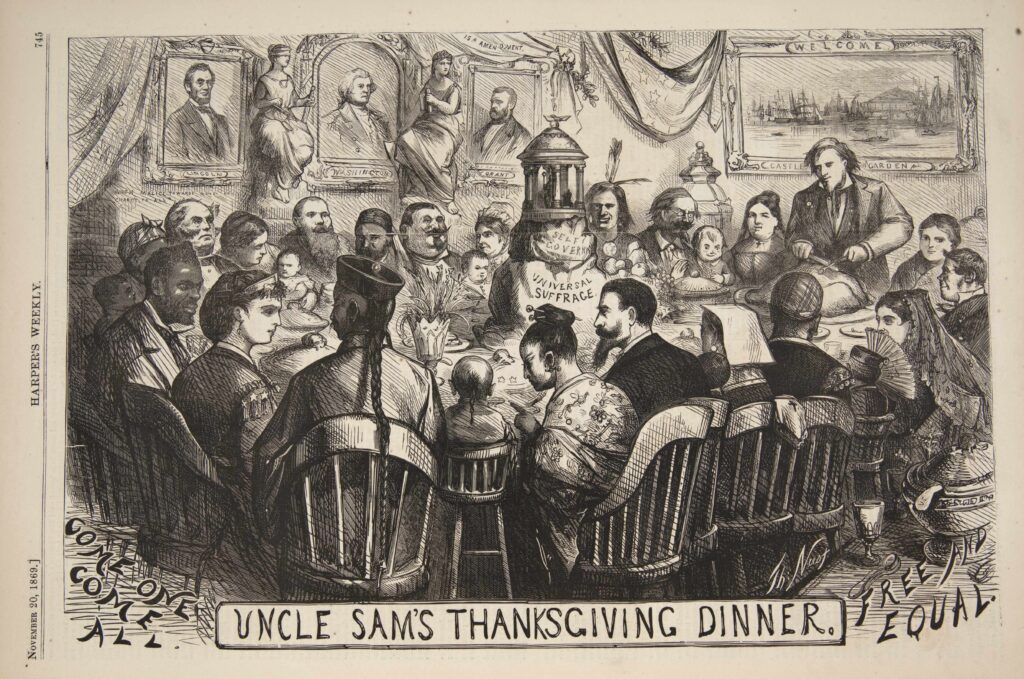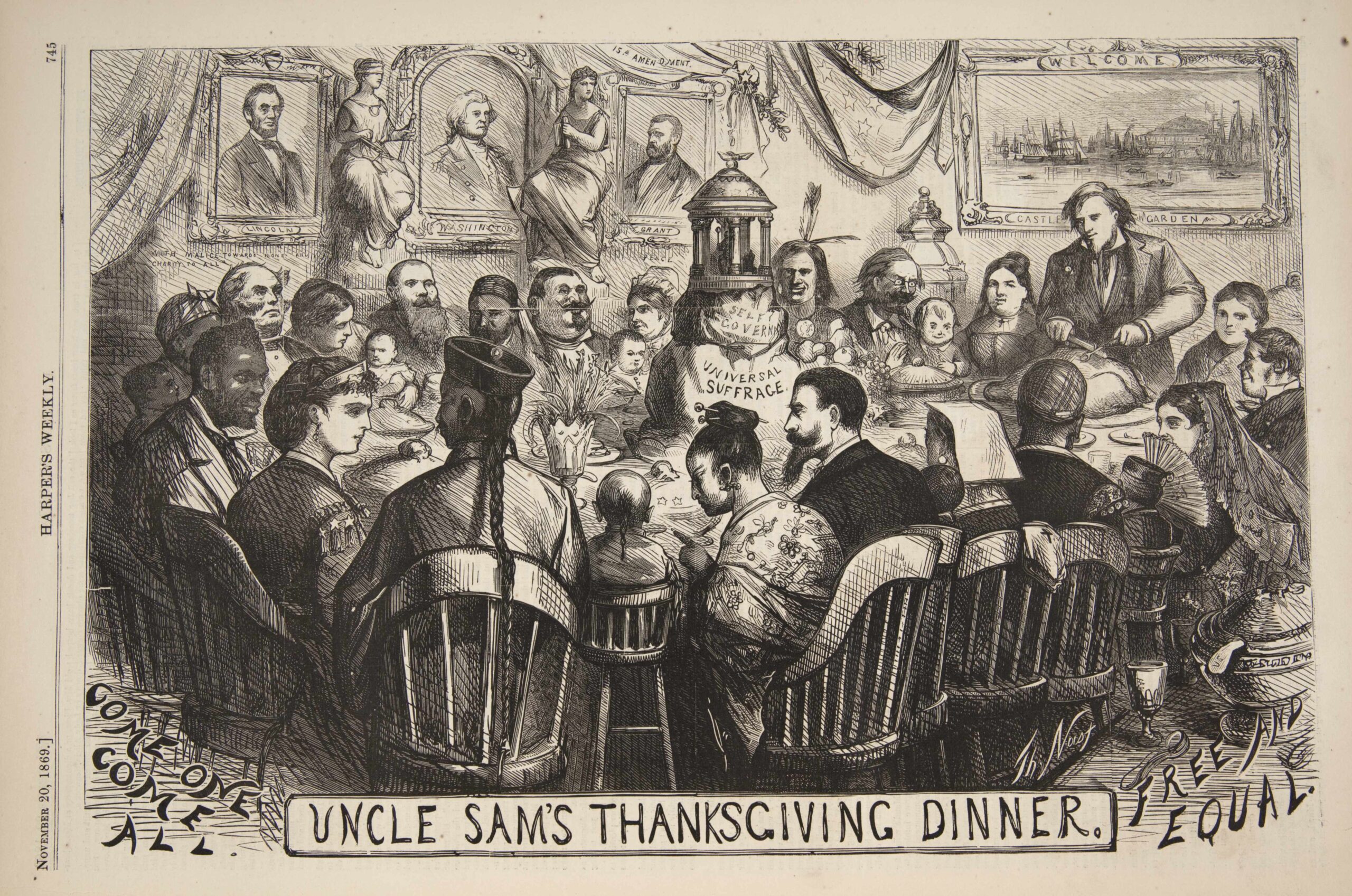Curriculum Connection: Immigration, Suffrage, Reconstruction, Visual Literacy
This cartoon also appears in the collection essay “Immigration and Citizenship in the United States”.
This activity is a way to provide a lesson on visual literacy within a history curriculum, as well as an introduction to or exploration of political cartoons. If your students are unfamiliar with political cartoons, you may want to begin with the Skills Lesson: Political Cartoons.
Materials – Available for Download in the Downloads Tab:
- A copy of the “Immigration and Universal Suffrage” activity
Display the image. Give students time to generate and answer questions about the object and write notes. Use the background material at the end of this activity whenever you think it will encourage students to ask more questions and think more about how to engage with the portraits.
Click on the image for a high-resolution version that can be displayed for your class.

Potential Questions
- What is this object?
- Where is it from?
- When was it published?
- What do you know about that period in the United States?
- What was the cartoon’s purpose?
- What is it showing?

Potential Questions
- Examine the image using the grid system and write down details from each grid. What do those details communicate?
- How many ethnicities can you identify in this image?
- What do the words in the two lower corners mean in this context?
- What kind of information does this source give you about the period after the Civil War?
- What background knowledge do you bring to your understanding of this image?
- What questions do you have about this image as a result of examining it? Where might you be able to get more information about this image or answers to your questions?
Background
The cartoon was created in support of the Fifteenth Amendment. The amendment was passed by Congress in February 1869 and, when this cartoon was published, it was being debated in state legislatures. New York at first ratified the amendment, but when a Democratic majority won in the fall of 1869 that vote was reversed. By March 1870, enough states had ratified the amendment for it to be added to the Constitution.
The image shows Uncle Sam (carving the turkey on the far-right) and Columbia (far-left), a symbol of the United States and of Liberty. Columbia sits between Black and Chinese families. This reflects the artist’s (Thomas Nast’s) support for immigrant groups and concern about the violence and prejudice they experienced. Some of the ethnicities and races pictured include German, French, Arab, British, Italian, Spanish, Chinese, and Irish. In the upper right is a picture of Castle Garden, which was the main entry point for European immigrants before Ellis Island was established in 1890.
Extension Activity
As an exploration of the U. S. Constitution, give students the text of the Fourteenth Amendment: “All persons born or naturalized in the United States and subject to the jurisdiction thereof, are citizens of the United States and of the State wherein they reside. No State shall make or enforce any law which shall abridge the privileges or immunities of citizens of the United States; nor shall any State deprive any person of life, liberty, or property, without due process of law; nor deny to any person within its jurisdiction the equal protection of the laws.” Explain to them that, although the amendment was written to guarantee the right to vote of Black men, many people, including suffragist Susan B. Anthony, believed that it guaranteed the right to vote to women, since they were citizens. Then have a discussion about what being a citizen in the U. S. means.
Additional Resources
- Kennedy, Robert C. “Uncle Sam’s Thanksgiving Dinner” in On This Day, HarpWeek and the New York Times.
- “Uncle Sam’s Thanksgiving Dinner” in Applied and Social Sciences Magazine at encyclopedia.com.
- “Uncle Sam’s Thanksgiving Dinner–Two Coasts, Two Perspectives” in Illustrating Chinese Exclusion, ThomasNastCartoons.com.
- “Uncle Sam’s Thanksgiving Dinner” in On this Day, HarpWeek (archived)
Download the following materials below:
- A copy of the “Immigration and Universal Suffrage” activity



